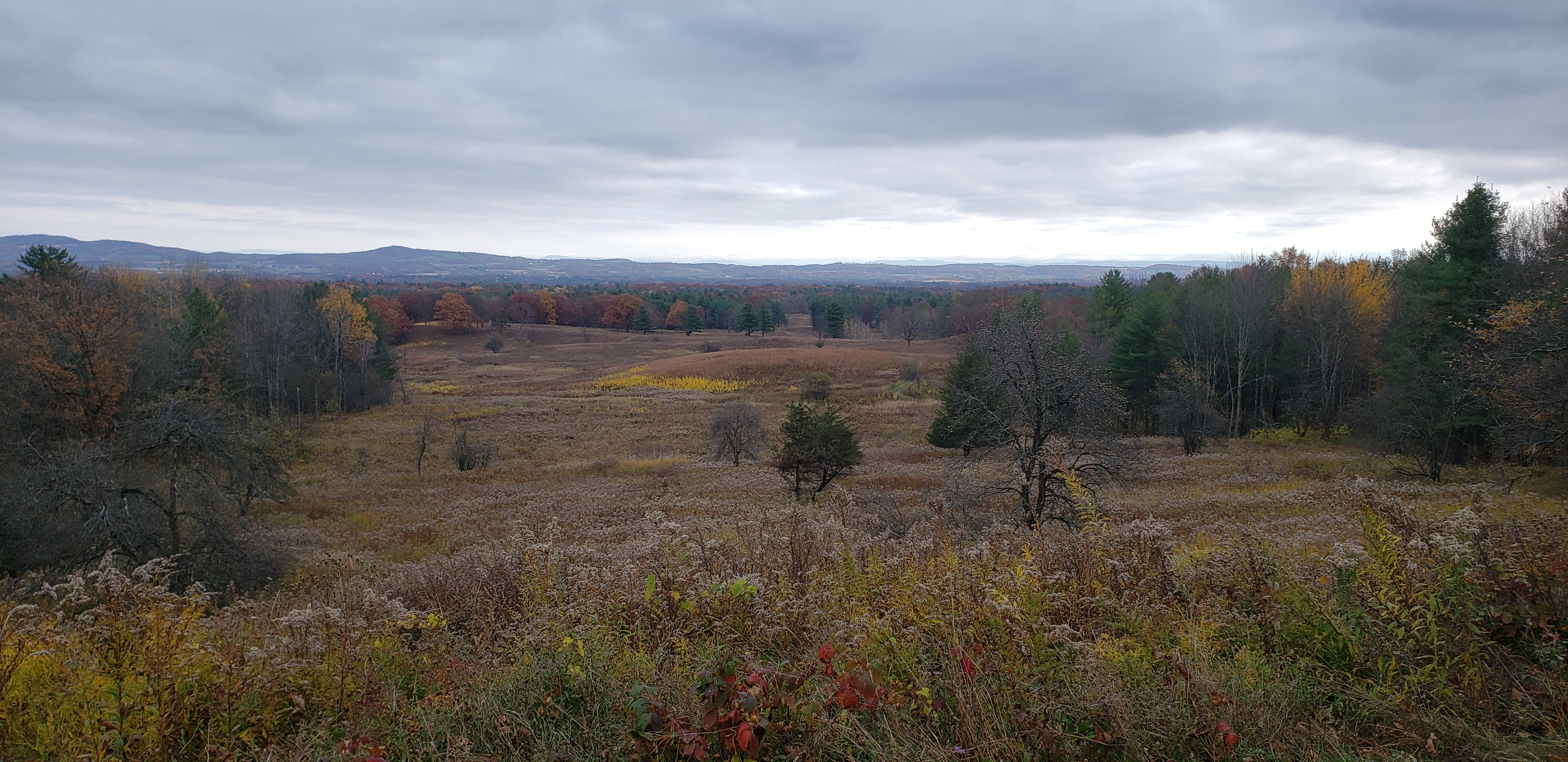
The Saratoga Battlefield NPS Photo
In striving to preserve Saratoga, FDR worked closely with a man named George Slingerland. Slingerland had a passion for Saratoga and battlefield preservation. He knew it was important to gain the support of local leaders to make the battlefield preservation process a success. He also knew that the one person that would make the battlefield's development a success would be Franklin Roosevelt. After FDR became governor of New York, Slingerland made a concerted effort to engage him about the Battlefield planning process. The two men corresponded for several years about the issues of preserving the Battlefield. George Slingerland's involvement continued and intensified even after the state took ownership of the battlefield in 1927. He functioned as the Battlefield's unofficial leader until 1928 when NYS leaders decided to appoint him as superintendent, a job that he would hold until 1932. As Slingerland's personal fancy of "Saratoga Battlefield's Future” largely became the official directive for the planning process he wrote an essay in 1927 about his vision Saratoga Battlefield. In it, he said:
"Sometimes, when on the field and planning for development, my fancy takes great flights and I visualize the whole area of around 3000 acres, covered with roads winding over the hills and valleys, through woods and places, with here and there a fine monument to tell the world of some act of one of the heroes of 1777. A part of the field, as an airport from which planes are arriving and departing with loads of history lovers who come to pay homage to the place of our birth. I see guides, who have been instructed as to the acts of each division or regiment, each hour of those memorable days of September 19 and October 7, escorting interested parties around.”
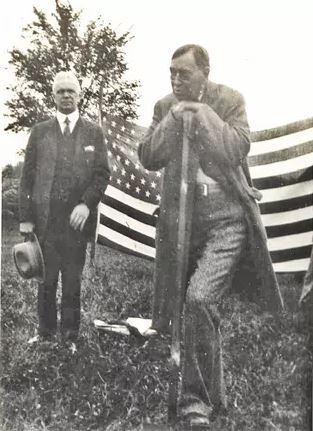
George Slingerland steps and lean on a shovel at the groundbreaking at Saratoga battlefield in 1926 with NYS Assemblymen Burton Esmon. (Saratoga National Historical Park Archives)
A large part of Slingerland's comprehensive goal for the Battlefield was recognition as a Federal national shrine or preferably, inclusion as a National Historic Park within the National Park System. He found the issue of obtaining land tracts to be difficult and contentious throughout the State's planning process. The land holding issue was also central to the debate about how and when the battlefield might become a national park. In January 1927 Slingerland wrote, "I have practically completed getting options on the whole battlefield area and I have options on about 2400 acres." He continued to work hard in the acquisition of lands and securing funding, including using his own personal finances. To Slingerland’s disappointment, New York State did not move in a timely manner. He wrote in 1928 to then- Governor Al Smith asking for additional appropriations for land acquisitions. By 1929, the two major players in the entire process were now George Slingerland and Governor Franklin Roosevelt. Slingerland realized early that he and Governor Roosevelt shared the same vision and passion for making Saratoga a national park, but the two men were at odds about the details of how such a transfer from state control to federal inclusion would be handled.
Governor Roosevelt clearly stated his allegiance to the battlefield during a visit to Saratoga in 1929. He attended the anniversary celebration on October 17 and made a rousing speech pledging support. He vowed to work to eventually bring its designation as a national shrine and spoke to the need for adequate facilities in support of historical educational. His remarks:
"On a battlefield like this at Saratoga, we should be able to visualize the history which was made here. “We should have some central spot for anyone with no knowledge whatever of military science should be able to understand it” ... “The State Government, the administration, and I am sure the Legislature, will continue slowly but certainly continue to round out this battlefield and make it a real national shrine."
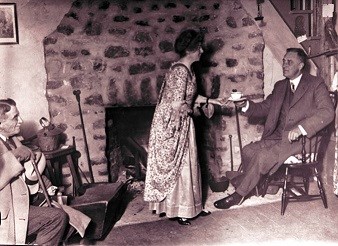
Governor Franklin Roosevelt having a cup of tea, served by a Colonial-Costumed Daughter of the American Revolution while FDR is seated in the "Period House" during his 1929 visit to Saratoga Battlefield. (Saratoga National Historical Park Archives)
FDR's declaration suited Slingerland's long term plans for the battlefield just fine and he thought he had found a real ally in Roosevelt. But, their relationship proved problematic and difficult at best. Slingerland had ideas on how to transfer the battlefield to federal control that were in direct contrast to FDR views. As Slingerland understood the process, the War Department's policy on accepting historic properties meant only fully purchased parcels could be donated. His fear was that the Federal government would not purchase further needed parcels. “The present Secretary of War... opposed the United States Government taking over or accepting as a gift, any historic spot owned by any state in the Union...In other words, the Government will accept a piece of land of historic nature from a group or individual... and erect monuments on it and pay for the yearly care, but has an ironclad rule against buying land...” Slingerland had hoped that Governor Roosevelt would be of better assistance on this matter.
The disagreement that arose between the two parties would further delay the development of the battlefield. Their strategies for turning the battlefield over to the federal government differed, and consequently the transfer process proceeded slowly. Slingerland chose not to support early efforts to present the battlefield for federal purchase while Roosevelt did support such notions. Roosevelt believed that the Federal Government could accept portions of the battlefield and after acquisition could add more parcels. Slingerland feared if he was not able to acquire all the battlefield before it was transferred to the National Park Service then parcels would be lost forever. Although two bills were passed by Congress in early 1930 (one dealt with investigating possible national park status for Saratoga and another to complete a topographic survey), a bill introduced in February 1930 to purchase the battlefield outright was rejected.
All during this maneuvering, Slingerland continued to seek support from Governor Roosevelt. He kept asking FDR for state appropriations for acquired land and for security of the battlefield because many battlefield monuments had experienced vandalism. On this matter, Slingerland was disappointed in Roosevelt once again. Though FDR was receptive to his dream he was not of his agenda. Roosevelt wanted the federal government to take control and would not approve of any further state expenditure for land acquisition. In a letter dated January 2, 1930, Slingerland wrote:
"I had a very nice visit with Governor Roosevelt yesterday. He is thinking of sending a message to the Senate and the Assembly asking them to memorialize (sic) Congress with a view to taking over the present holdings of the State in the Battlefield and making it a National Shrine. I asked him about the rest of the land. He thought that if the Federal Government would take over, that the future Legislature would supply the balance of the land to complete the Battlefield. I think that New York State should further develop the park."
As much as he pushed, Slingerland could not sway Roosevelt's thinking about land acquisitions. In 1931, Slingerland detailed his frustrations with FDR on how to proceed on the Battlefield planning process as such:
"Governor Roosevelt is anxious to make a present of the field as it is, to the Federal Government but I have told him that the Federal Government would not accept it until it was completed. I asked him for 184,000.00 this year to purchase the balance of the land but he cut it out."
Though he felt Roosevelt was on the wrong side of the issues they continued to work together to transfer Saratoga to the Federal Government. Things would have to what until FDR became president.
On October 8, 1932, George Slingerland died of a heart attack. The man that made it his life's work to make Saratoga a National Shrine or National Historic Site was gone. Fortunately, his vision lived on after his death through former New York Governor, and now President, Franklin D. Roosevelt. Though he disagreed with Slingerland at times about how to transfer the land to the Federal Government, FDR still believed the Battlefield should be part of the NPS.
For FDR, the final push to bring historic sites like Saratoga under the NPS umbrella really began with a drive in Northern Virginia in April 1933. Franklin Roosevelt was pushed along by a gentleman named Horace M Albright, who was the Director of the NPS at the time.
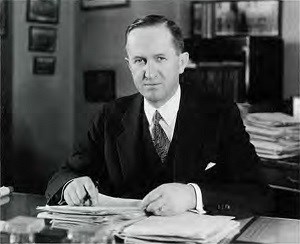
Horace Albright (NPS Photo)
Albright was following the tradition of Stephen Mather of endearing the National Park Service to the American people as the surest way to win congressional appropriations. FDR was aware of that when he asked Albright to take a country drive on April 9, 1933. On that drive, President Roosevelt learned how NPS units were faring in the Great Depression. Albright, taking advantage of his seniority, also had a hidden agenda: he planned to lobby the President to transfer America's military-historical areas and National Monuments (those in the Department of Agriculture and the War Department), to the NPS within the Department of Interior.
After Roosevelt's questions, Albright responded without missing a beat. He informed Roosevelt that a bill had been introduced to bring sites like the Saratoga battlefield under NPS control, but the bill had never left committee. After a few moments of reflection Roosevelt said, "suppose you do something tomorrow about this?" To FDR's surprise President's Harding, Coolidge and Hoover hadn't acted to protect Revolutionary War sites like Saratoga Battlefield from encroaching commercial development. On August 10, 1933, FDR issued EO 6166 thus creating what we know as the modern-day National Park Service.
Saratoga Battlefield had been a New York State historic site since 1927. Finally for Saratoga "tomorrow" arrived on June 1, 1938 when public law 576 was passed, creating Saratoga National Historical Park. New York State would continue with the site planning and development and the National Park Service would serve in an advisory role. In 1941, the NPS formally assumed complete ownership and management of the site. The Roosevelt administration had had a presence at the Saratoga Battlefield prior to federal government taking formal control of the site, however. In 1939, FDR sent the Civilian Conservation Corps to help get things organized at Saratoga.
After President Franklin Roosevelt signed the Emergency Conservation Work Act, creating the CCC, he set out to preserve the country's National and Military Parks. Between 1939 and 1942 the CCC worked on all sorts of projects at Saratoga. Projects consisted of removing non-historic fences, roads and foundations, developing new roads through the Battlefield, cleaning out invasive plants, conducting archaeology, developing maps, managing landscapes through prescribed fires, and offering site interpretation for visitors. Work did not always get done on time. There were issues that consisted of untrained labor, harsh soil conditions as well as workers dealing with hand tools that further slowed the process down.
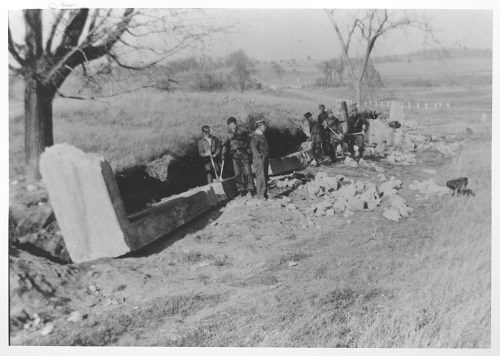
A Crew of several CCC program participants using hand tools to help remove part of a non-historic concrete foundation at Saratoga Battlefield. (Saratoga National Historical Park Archives)
In exchange for working for the CCC, the workers received 30 dollars a month ($600 today), 25 dollars of which went home to their families. They also received housing, uniforms, meals, medical care, education, and job training. They lived near the battlefield in a CCC camp that was built in Stillwater NY.
With the onset of World War II, the CCC involvement at Saratoga National Historical Park declined as the men that worked in the CCC at Saratoga donned another uniform and went to fight for their country in the Pacific and European theaters. The camp itself was disbanded by the spring of 1942.
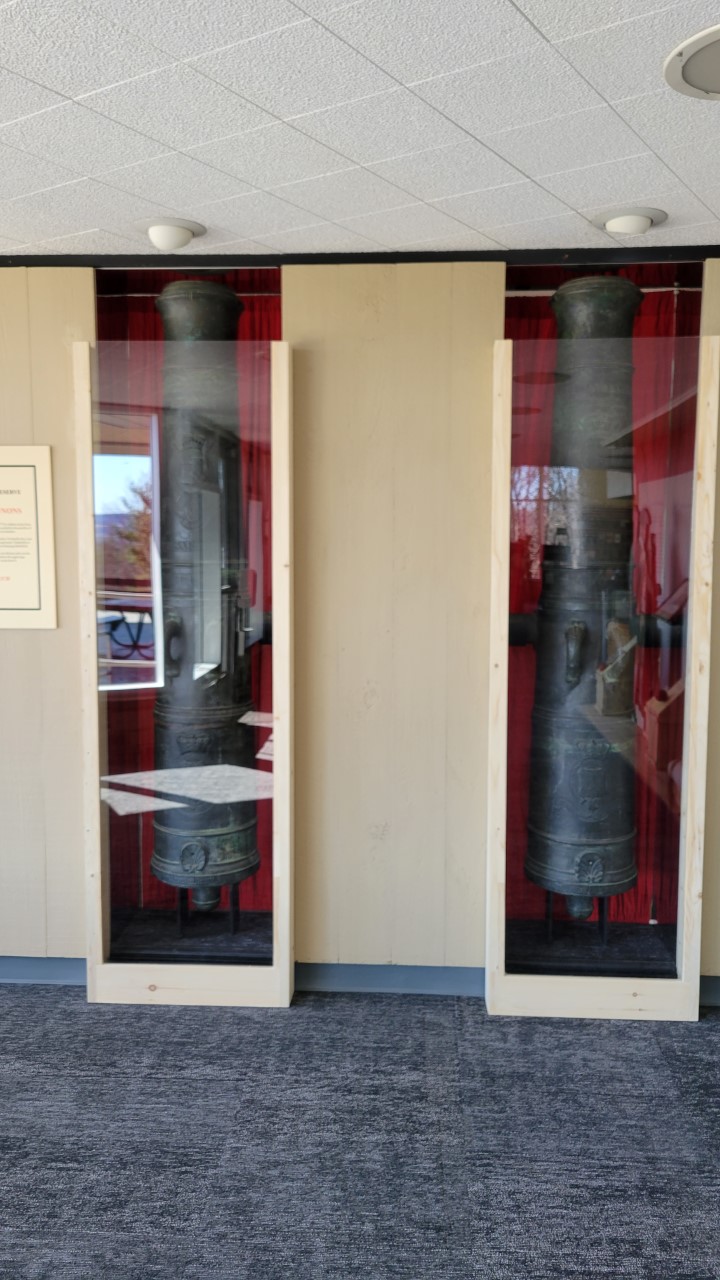
Surrender British Cannons in the Visitor Center of Saratoga National Historical Park. (NPS Photo)
Much of the success of Saratoga Battlefield becoming a National Historical Park belongs to George Slingerland and Governor, and then President, Franklin Roosevelt. FDR was involved in the planning of the Visit Center and saved two captured British surrender cannons. It was their vision, along with others, that allowed the battlefield to become part of the NPS so future generations could enjoy the hallowed grounds of Saratoga.
Bibliography:
Saratoga National Historic Site Park Collections: Cultural Landscape Report for Saratoga Battlefield.
Rightful Heritage: Franklin D. Roosevelt and the Land of America by Douglass Brinkley.
The Autobiography of Eleanor Roosevelt by Eleanor Roosevelt.
